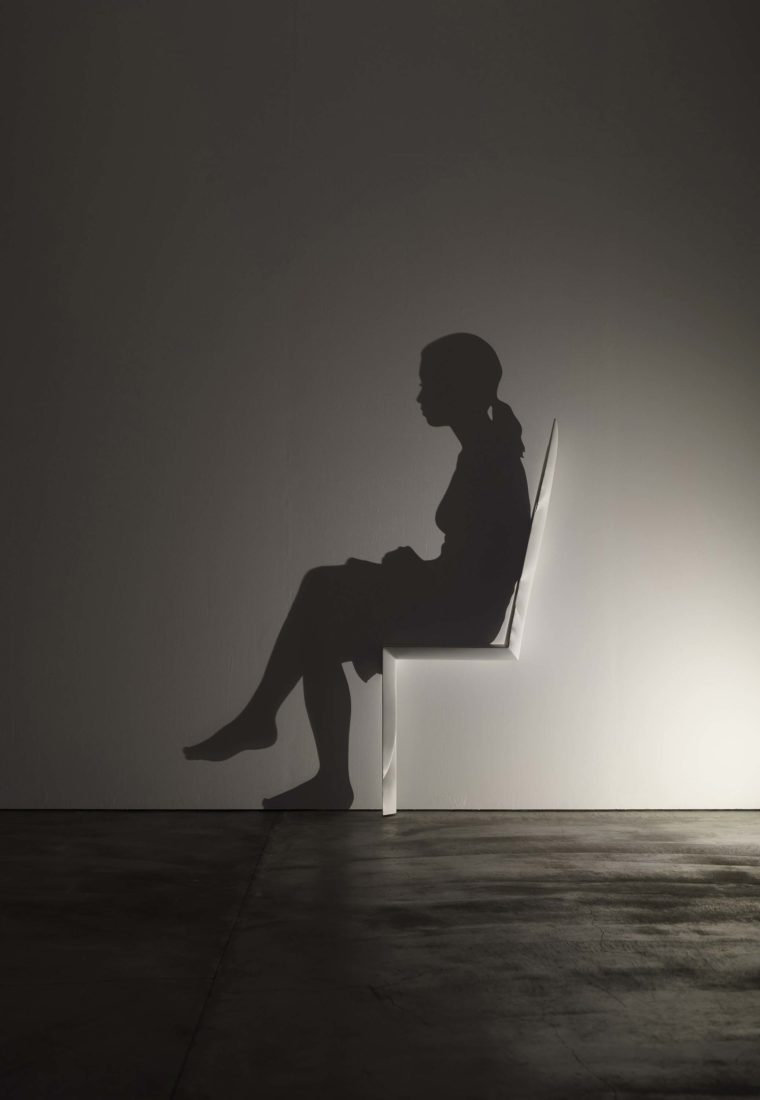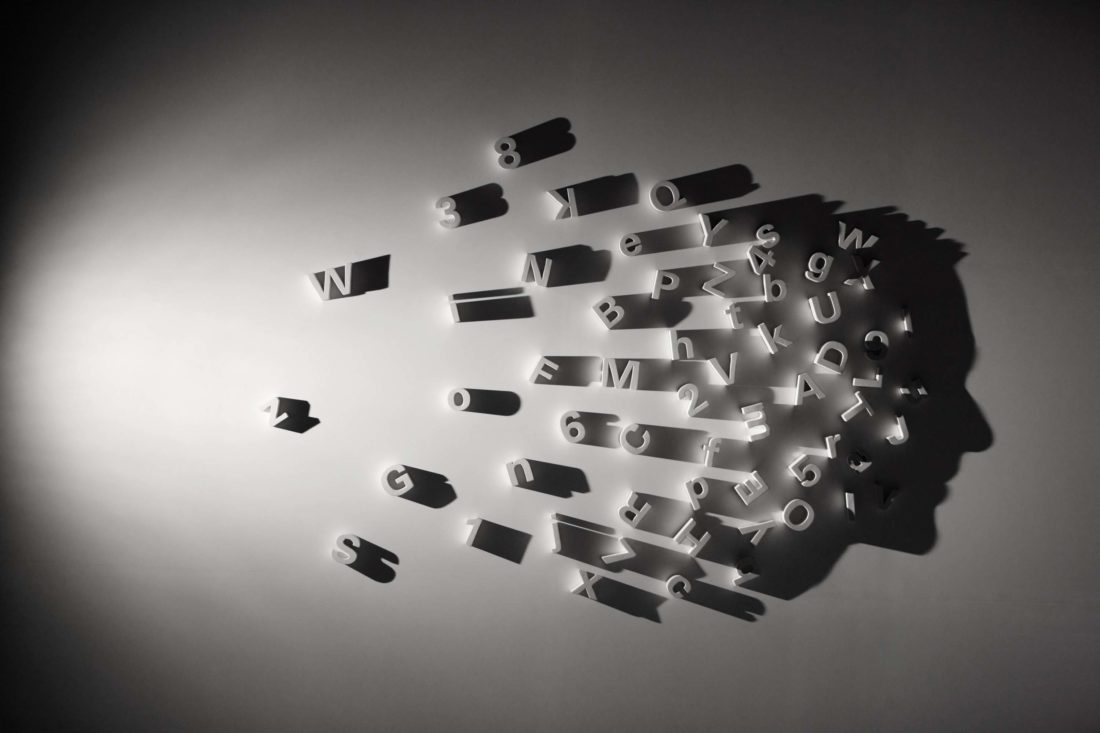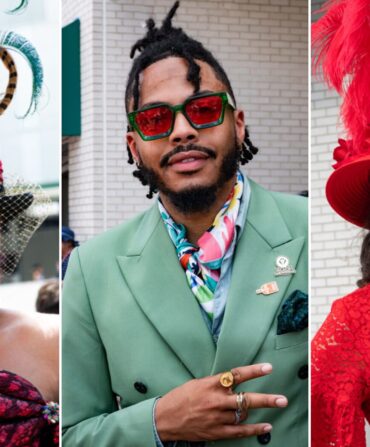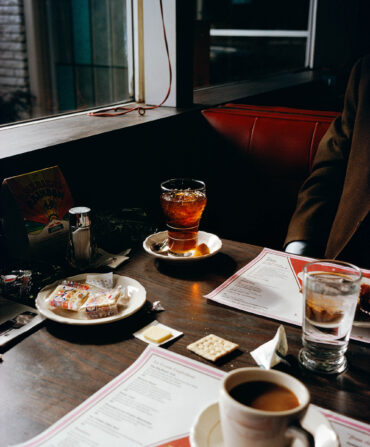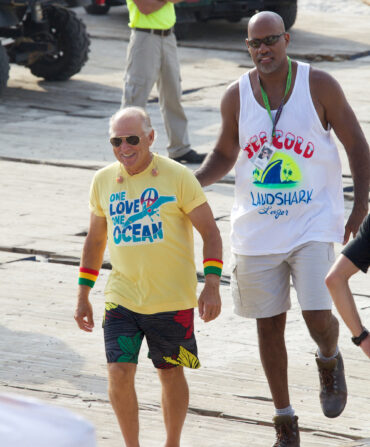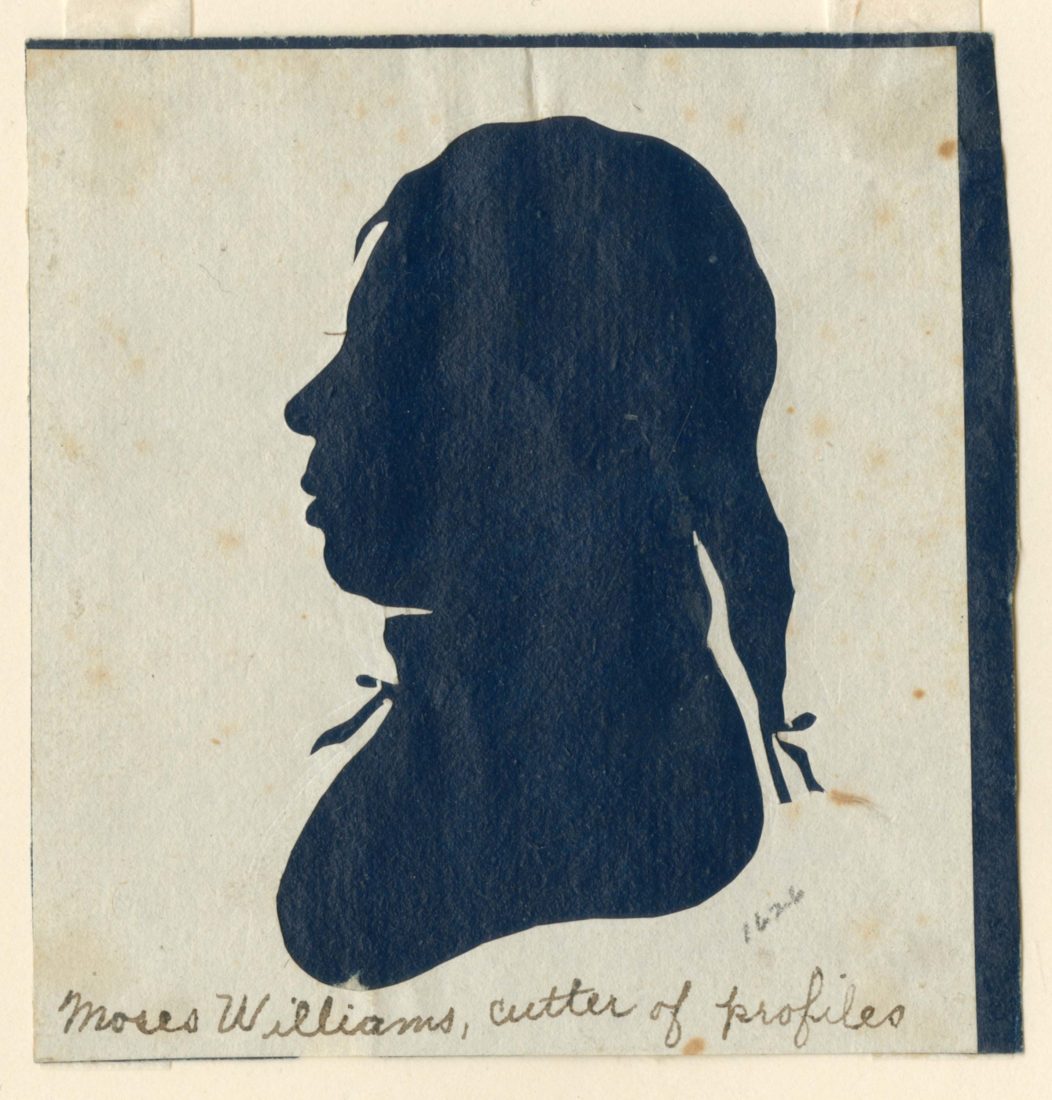
Moses Williams, Cutter of Profiles. Attributed to Moses Williams, c. 1803.
Photo: Courtesy of the National Portrait Gallery
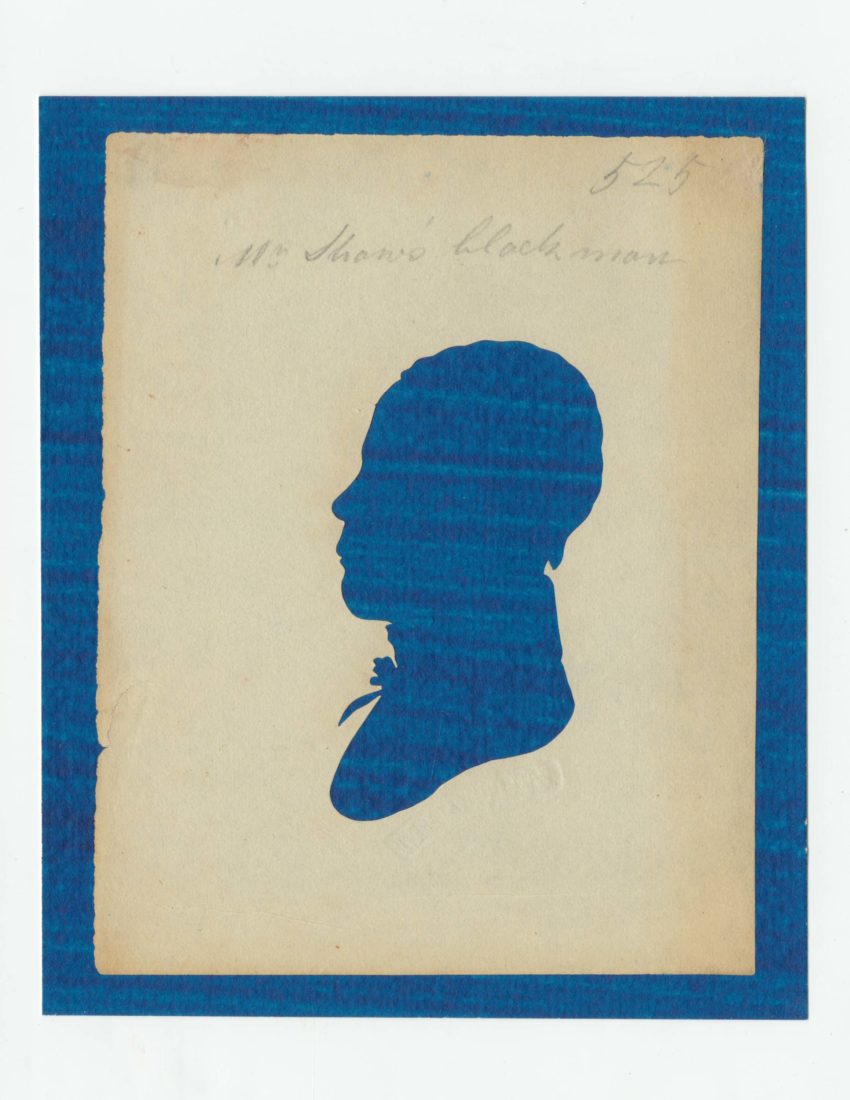
Mr. Shaw’s Blackman. Attributed to Moses Williams,
after 1802.
Photo: Courtesy of the National Portrait Gallery
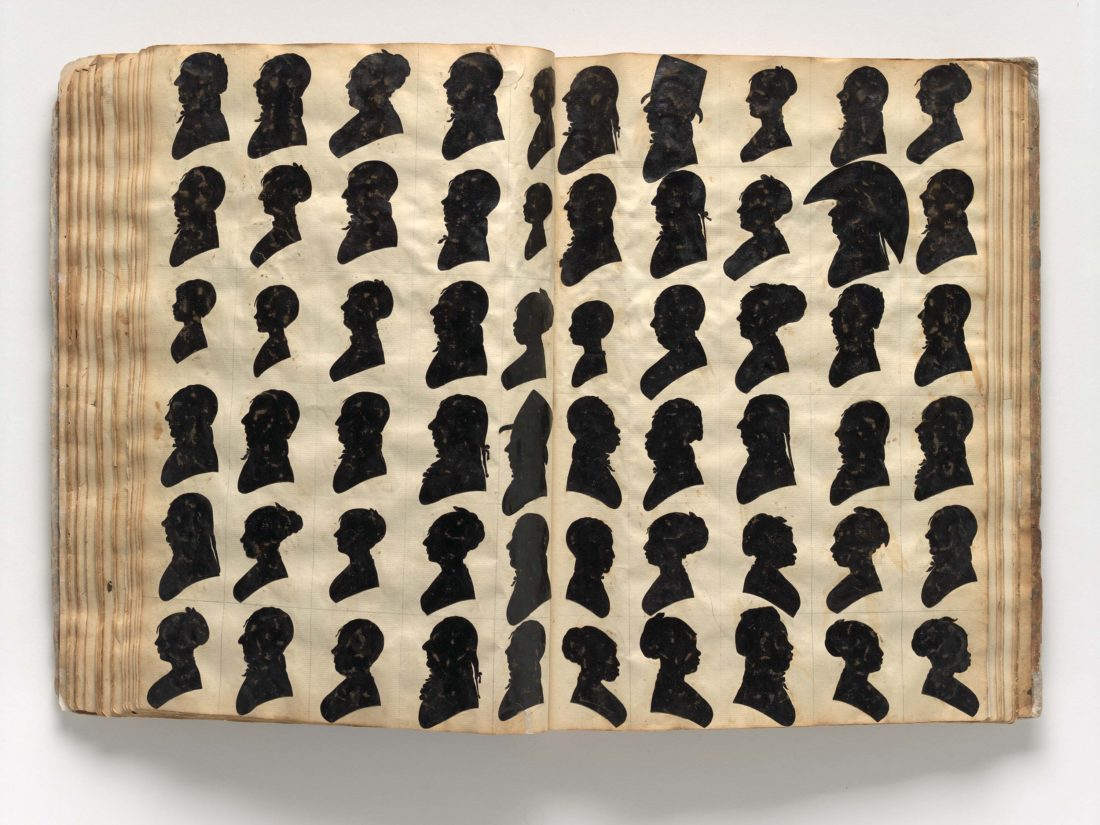
The ledger book of William Bache, c. 1803–1812.
William Bache traveled the country cutting and selling silhouettes. This ledger is from his time in New Orleans, Louisiana. After cutting a profile, he’d save a facsimile for his records. This book shows how diverse his patrons were: Creole citizens, people in fancy hats, children, and military heroes are all included.
Photo: Courtesy of the National Portrait Gallery
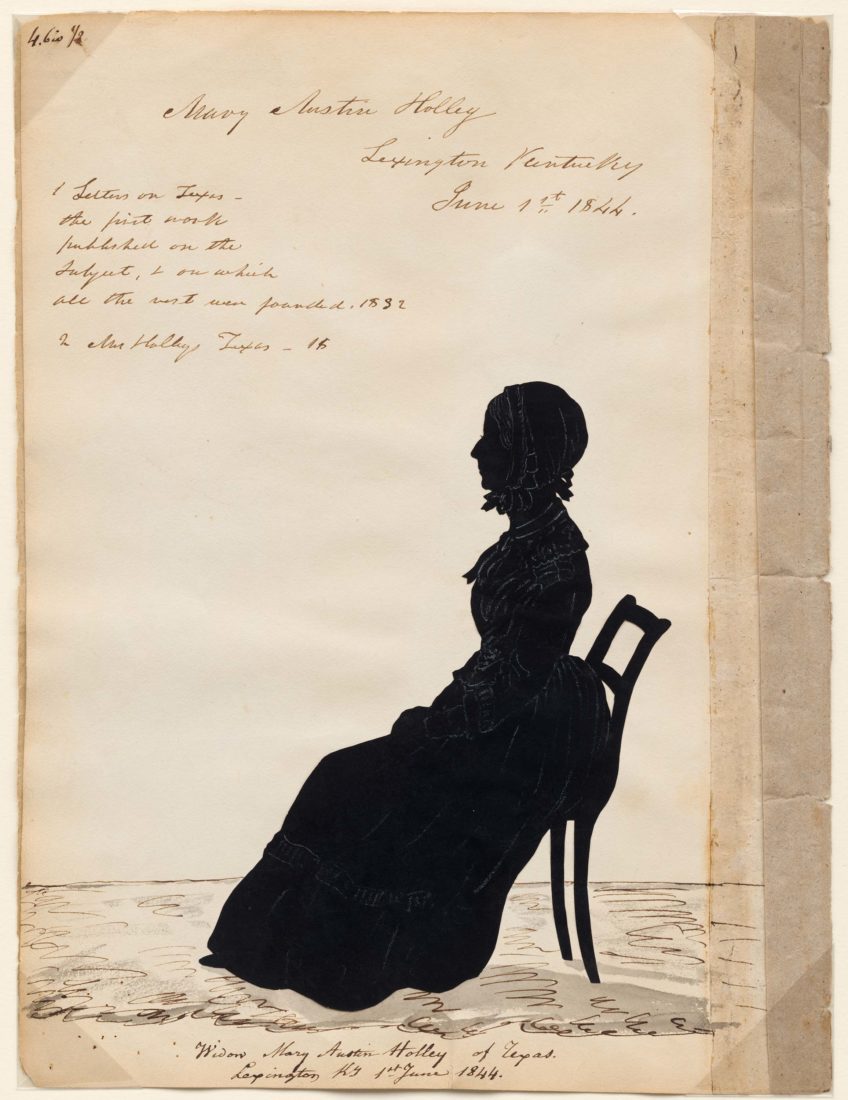
Mary Phelps Austin Holley. Auguste Edouart, 1844.
Mary Phelps Austin Holley was an author best known for writing the first English-language history of Texas. She sat for this silhouette in Lexington, Kentucky.
Photo: Courtesy of the National Portrait Gallery
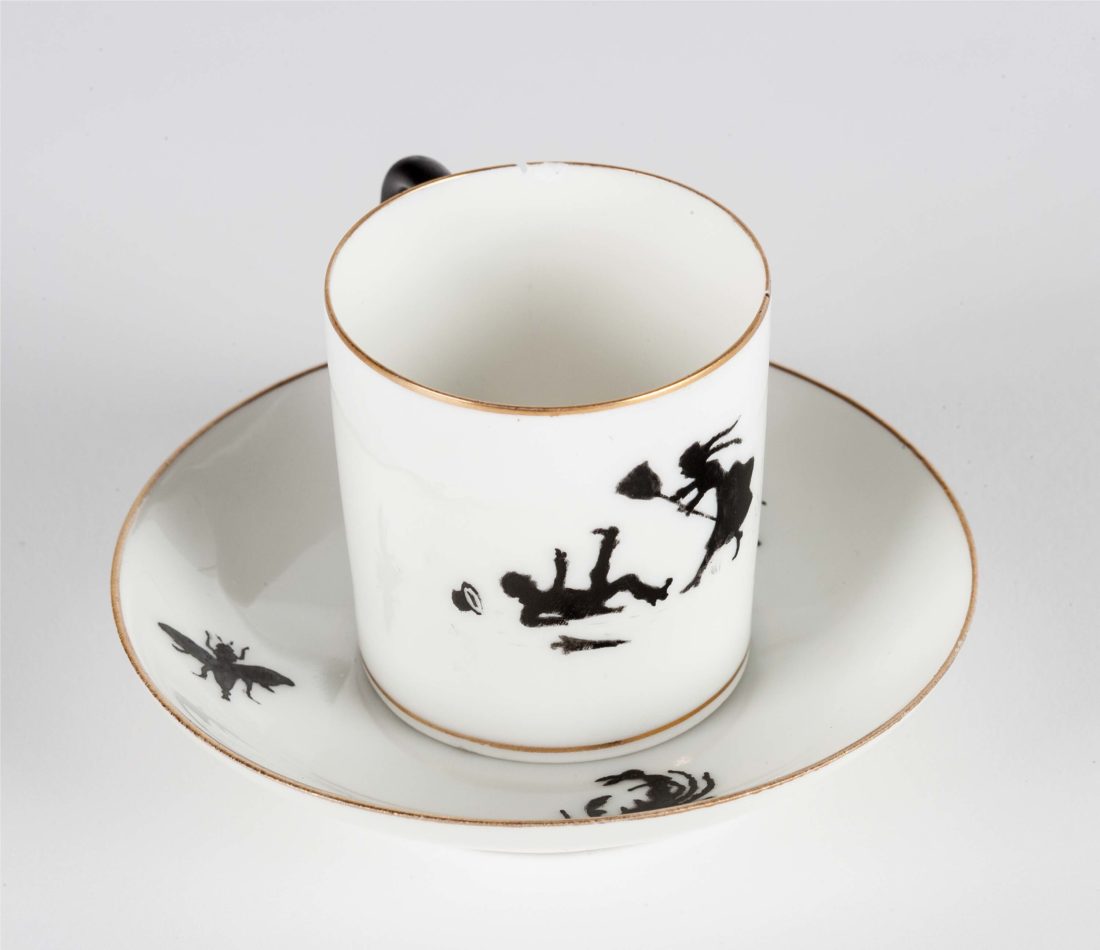
Tea cup and saucer. Annie Dawson, 1872.
This tea cup, given as a set for a Quaker wedding present, illustrates the ups and downs of marriage.
Photo: Courtesy of the National Portrait Gallery
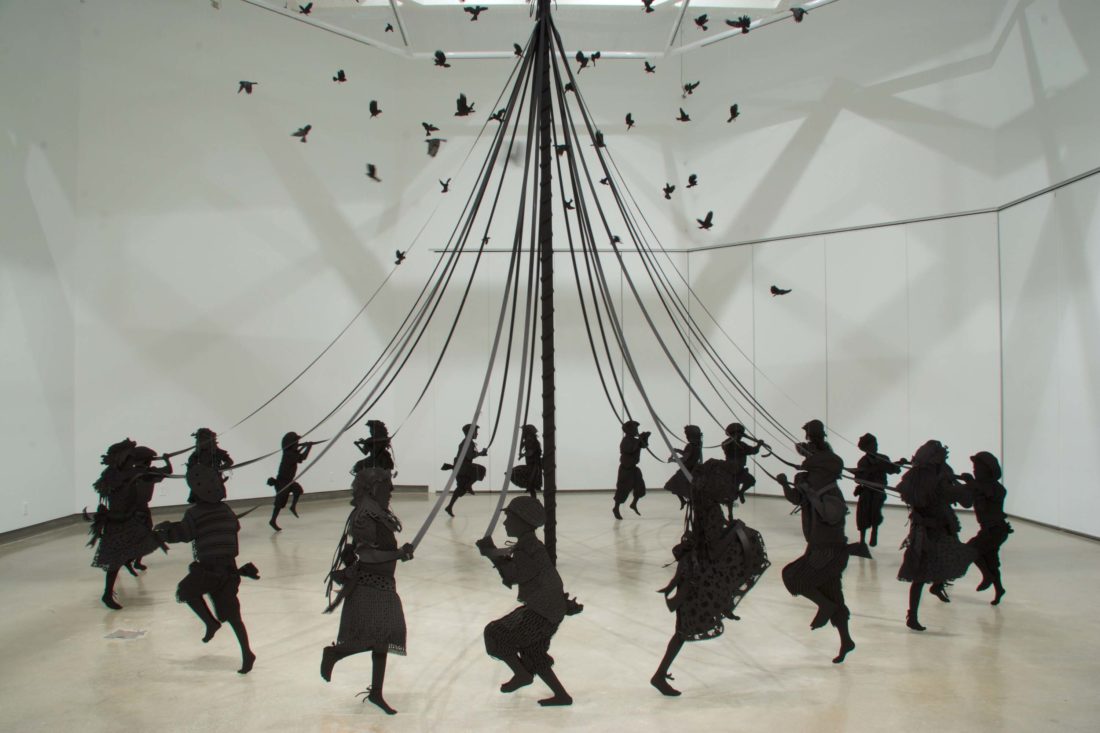
Maibaum. Kristi Malakoff, 2009.
This life-size silhouette scene is based on the annual children’s maypole tradition in the artist’s British Columbia hometown.
Photo: Courtesy of the National Portrait Gallery



